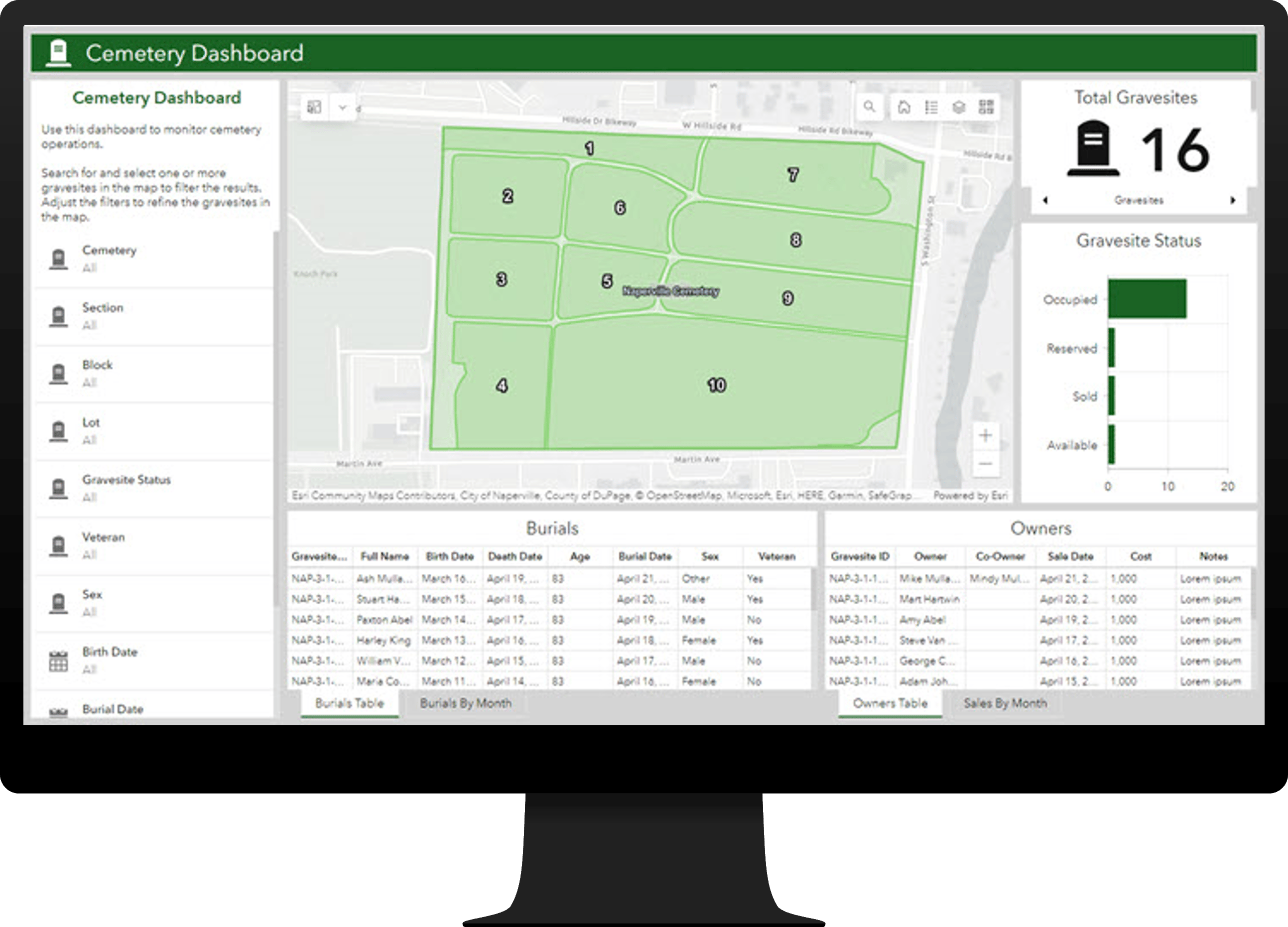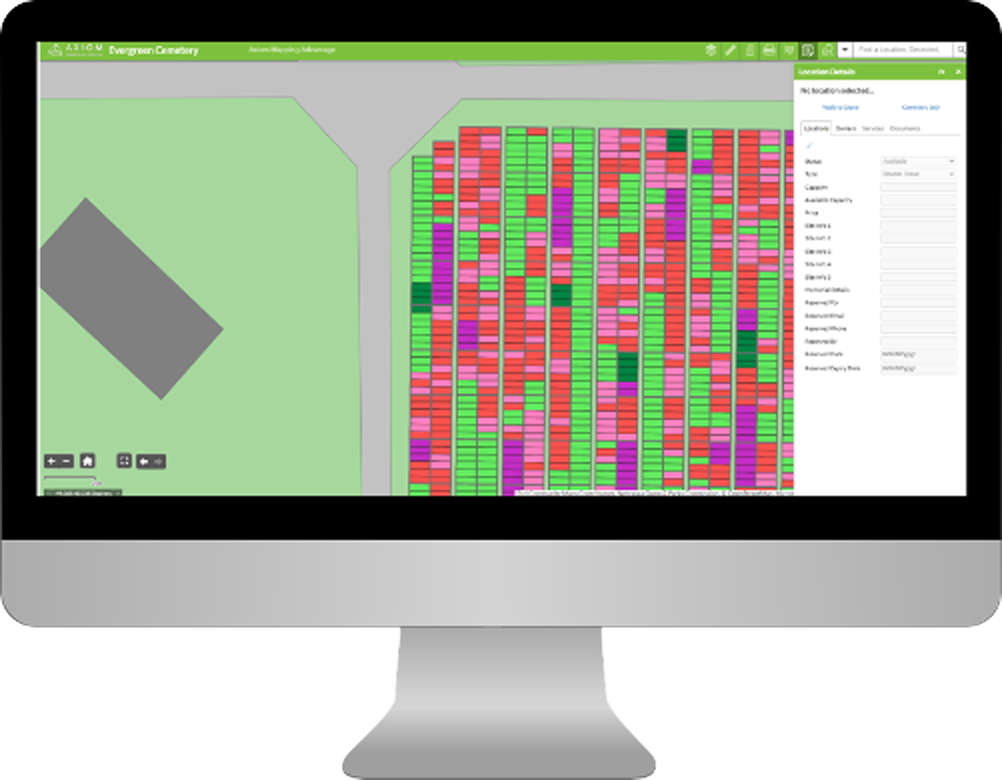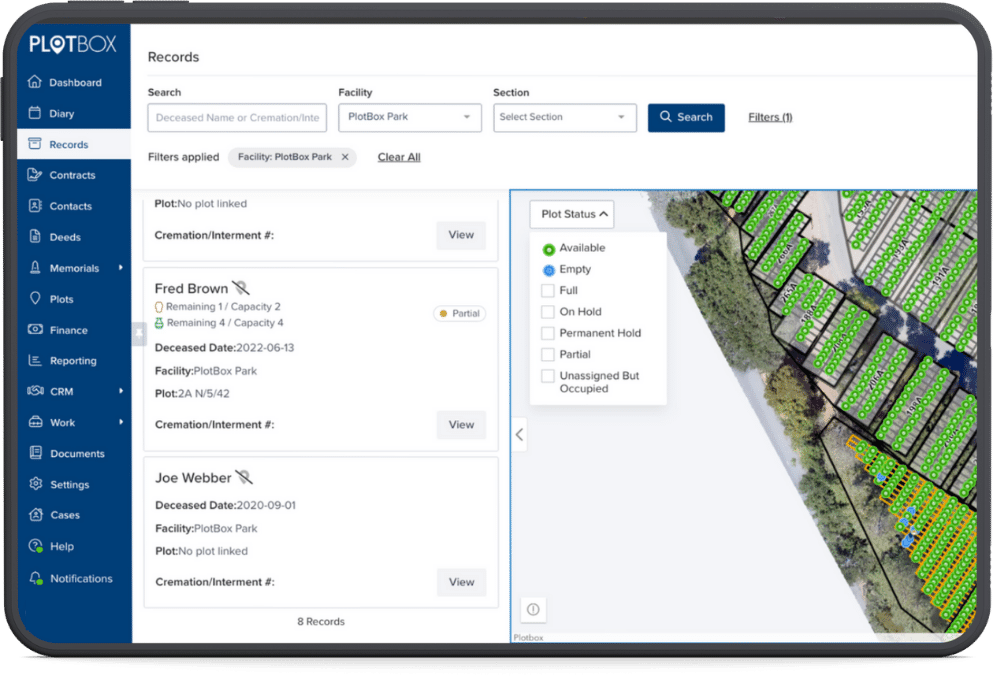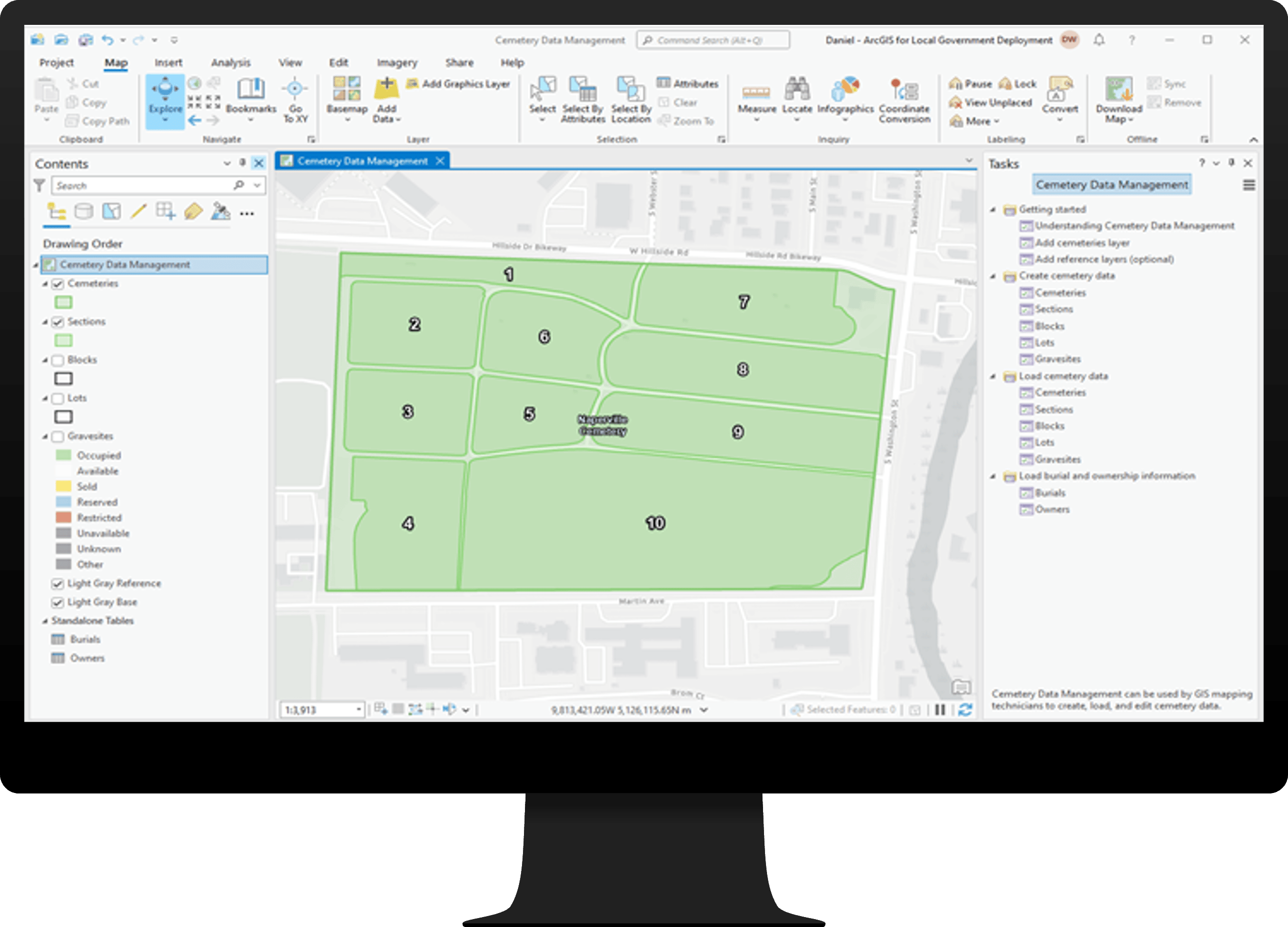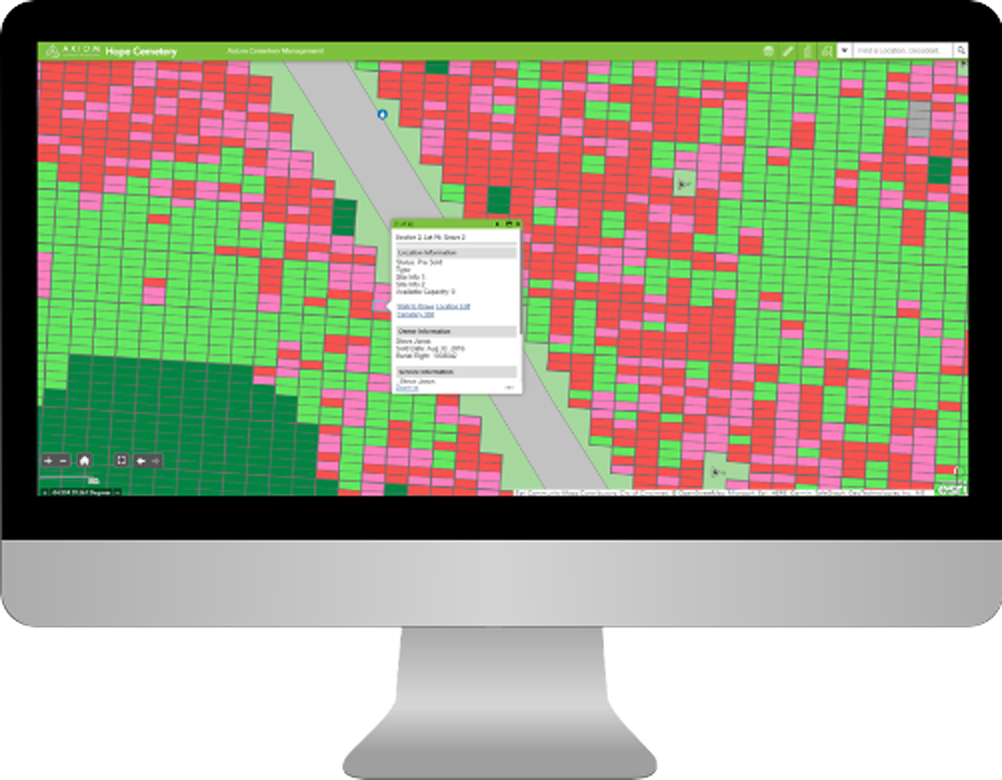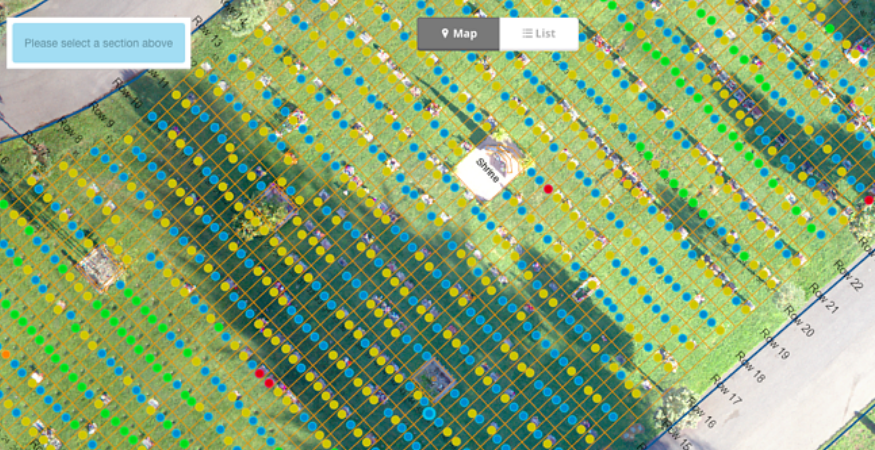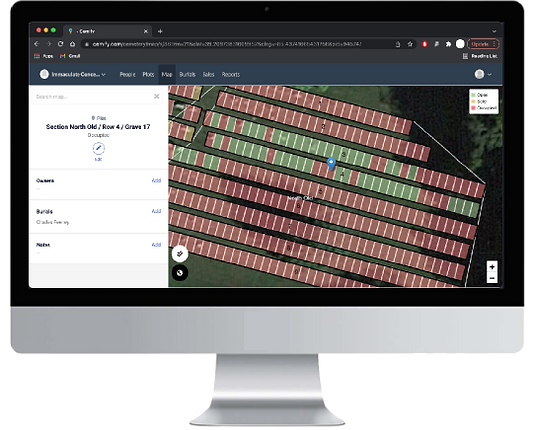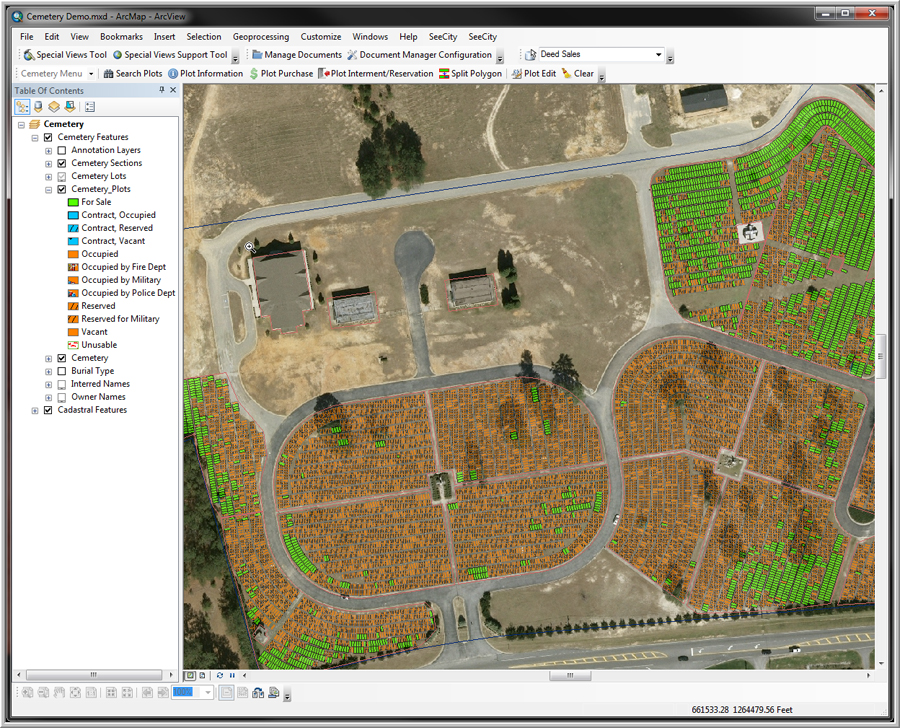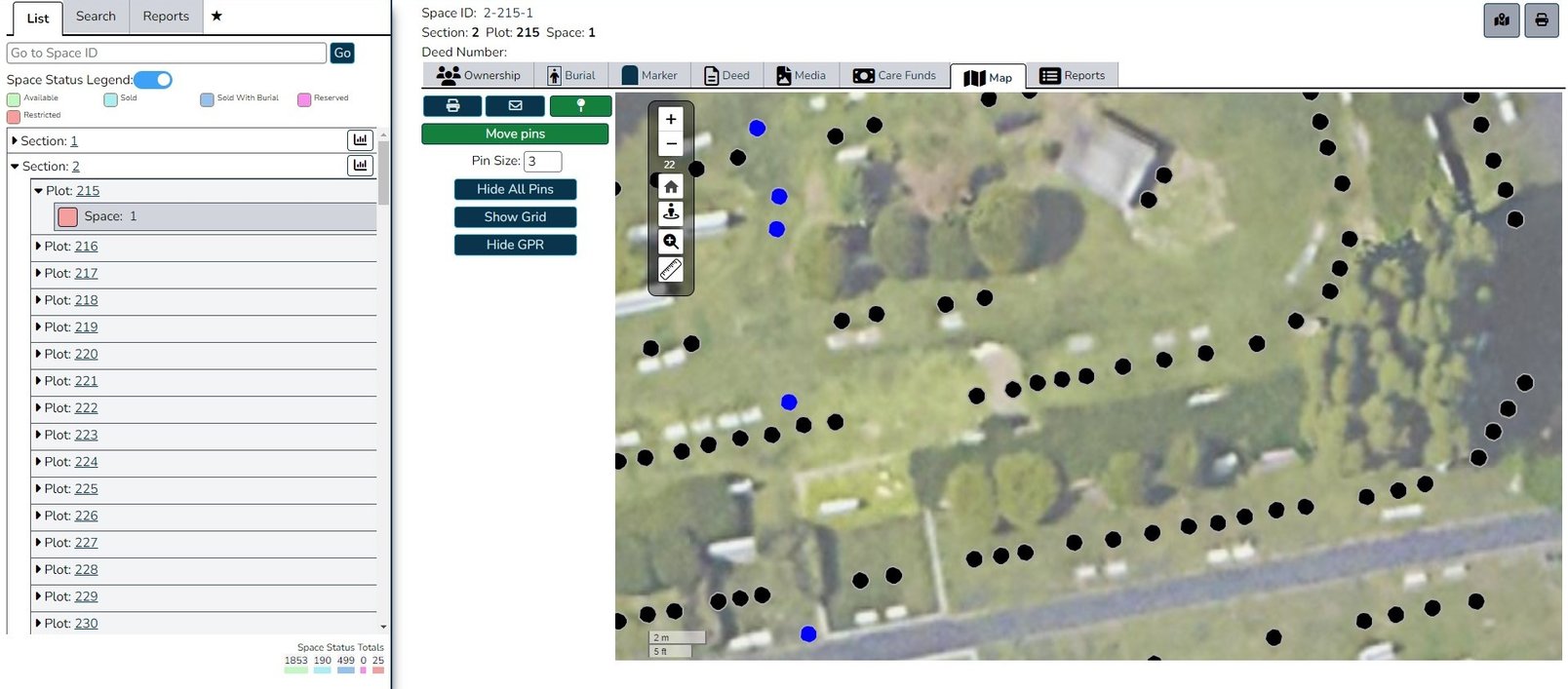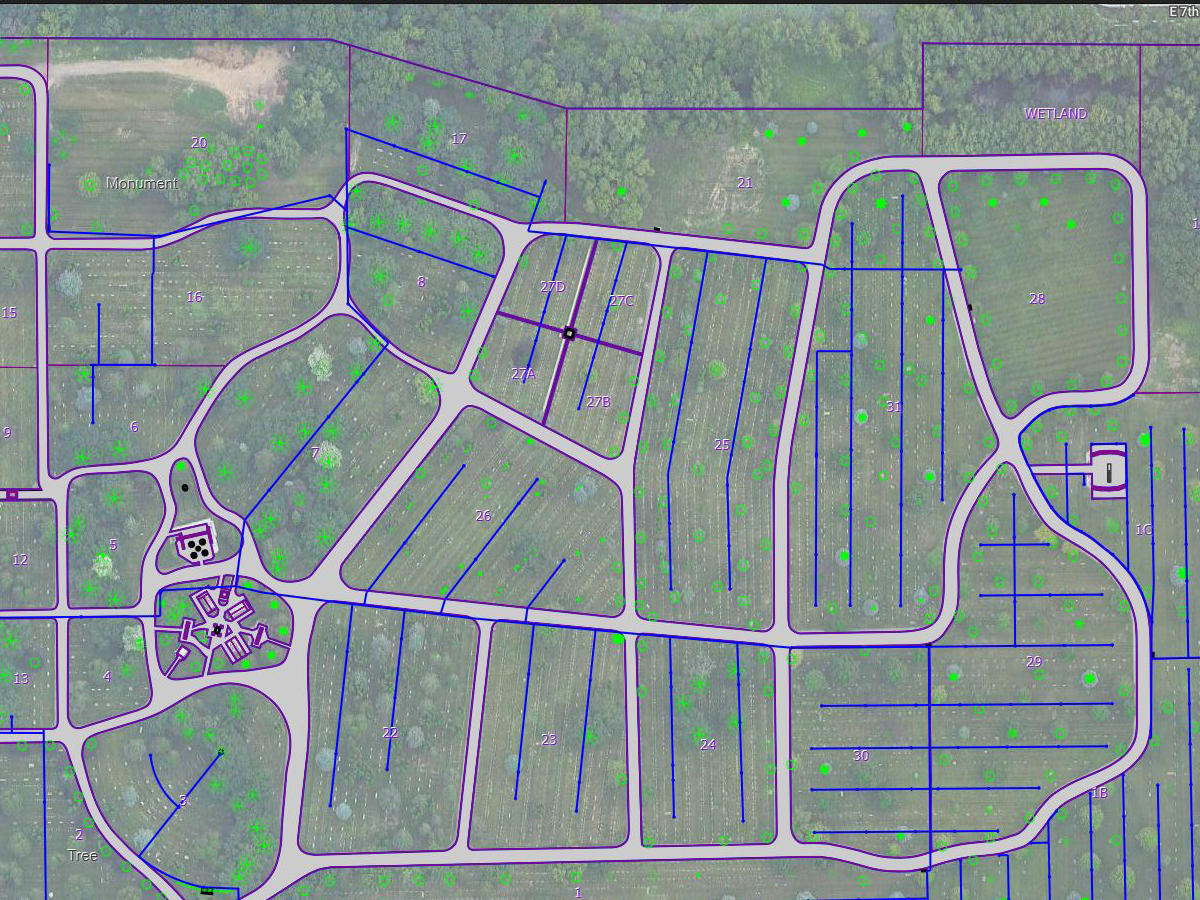Can Cemetery Software Assist With Mapping And Plot Management

Imagine a sprawling, sun-drenched landscape dotted with aged headstones, each whispering stories of lives lived and legacies left behind. The air is thick with the scent of freshly cut grass and the quiet murmur of remembrance. But beneath the serene facade lies a complex web of records, plots, and perpetual care obligations that often challenge cemetery administrators. It's a delicate balance of honoring the past while efficiently managing the present.
At the heart of this challenge lies the question: can cemetery software truly assist with mapping and plot management, transforming a traditionally paper-based, often chaotic system into a streamlined, easily navigable resource? The answer, increasingly, is a resounding yes. Modern cemetery software offers powerful tools for digital mapping, plot management, record-keeping, and even genealogical research, promising to revolutionize how these sacred spaces are administered.
The Evolving Landscape of Cemetery Management
Cemetery management has historically been a labor-intensive process. Burial records, plot maps, and financial documents were often stored in physical ledgers and filing cabinets, making it difficult to access information quickly and efficiently. This system was not only time-consuming but also prone to errors, loss of data, and difficulty in locating specific burial sites.
The advent of digital technology offered a potential solution, but early attempts at digitization were often piecemeal and lacked the comprehensive functionality needed for effective cemetery management. Simple spreadsheets or basic databases could track some information, but they failed to provide the visual mapping and sophisticated search capabilities required for truly efficient plot management.
The Rise of Specialized Cemetery Software
The need for more robust solutions led to the development of specialized cemetery software. These systems are designed specifically to address the unique challenges of cemetery administration, offering features such as digital mapping, plot sales management, genealogy integration, and perpetual care tracking.
Cemetery software leverages Geographic Information Systems (GIS) technology to create interactive maps of the cemetery grounds. This allows administrators to visually locate plots, track availability, and record important information about each burial site. These digital maps can be easily updated and shared, providing a clear and accurate representation of the cemetery layout.
According to a report by the National Cemetery Association, the implementation of cemetery software has shown a significant increase in operational efficiency. Cemeteries that adopt digital mapping see a reduction in time spent locating plots, verifying ownership, and responding to inquiries from families and researchers.
Mapping and Plot Management: Core Functionalities
The ability to create and maintain accurate digital maps is a cornerstone of modern cemetery software. These maps are not simply static images; they are dynamic databases that can be linked to detailed information about each plot.
Administrators can use the software to track plot ownership, burial dates, memorial information, and even photographs of the headstones. This comprehensive data can be easily accessed through a user-friendly interface, making it simple to answer questions from the public and manage cemetery operations.
The mapping capabilities also extend to plot sales management. The software can track available plots, generate sales contracts, and update the digital map to reflect new ownership. This streamlined process helps to ensure accurate record-keeping and prevents potential disputes over plot ownership.
Beyond Basic Mapping: Advanced Features
Many cemetery software packages offer advanced features that go beyond basic mapping and plot management. These features can include genealogical research tools, perpetual care fund management, and online portals for families to access information about their loved ones' burial sites.
Genealogy integration allows users to search for relatives buried in the cemetery and view their plot locations on the digital map. This feature can be a valuable resource for genealogists and family members seeking to connect with their ancestors.
Perpetual care fund management helps cemeteries track and manage the funds designated for the ongoing maintenance of burial plots. This ensures that the cemetery grounds are properly cared for and that the memory of those interred is honored for generations to come.
The Benefits of Implementation
The benefits of implementing cemetery software extend beyond improved mapping and plot management. By streamlining operations and improving data accuracy, these systems can help cemeteries save time and money.
Improved data access allows administrators to respond quickly to inquiries from the public, enhancing customer service. The ability to track plot availability and manage sales more efficiently can also lead to increased revenue.
Furthermore, the use of digital mapping and record-keeping can help to preserve the cemetery's historical records for future generations. By digitizing paper-based documents, cemeteries can protect against loss or damage due to fire, flood, or other unforeseen events.
"Cemetery software has revolutionized the way we manage our cemetery. It has saved us countless hours of searching through paper records and has allowed us to provide better service to our families." - Sarah Miller, Cemetery Administrator at Oakwood Memorial Park.
Challenges and Considerations
While cemetery software offers numerous benefits, there are also challenges and considerations to keep in mind when implementing these systems. One of the biggest challenges is the initial investment in software and hardware.
Data migration can also be a significant undertaking, especially for cemeteries with a large volume of historical records. It is important to carefully plan the data migration process and to ensure that all data is accurately transferred to the new system.
Staff training is another key consideration. Cemetery staff must be trained on how to use the software effectively in order to realize its full potential. Choosing a software vendor that provides comprehensive training and ongoing support is crucial.
Looking Ahead: The Future of Cemetery Management
The future of cemetery management is likely to be increasingly digital. As technology continues to evolve, we can expect to see even more sophisticated cemetery software solutions emerge.
The integration of drone technology for aerial mapping and 3D modeling of cemetery grounds is one exciting possibility. This could provide even more accurate and detailed representations of the cemetery landscape.
The use of mobile devices for on-site data collection and plot management is also becoming increasingly common. This allows cemetery staff to access information and update records in real-time, improving efficiency and accuracy.
The increasing demand for genealogical research and the desire to connect with ancestors are driving the development of more user-friendly online portals and search tools. These innovations will make it easier for families to locate and learn about their loved ones' burial sites.
Cemetery software is not just about managing plots; it is about preserving memories, honoring legacies, and connecting families with their past. By embracing technology, cemeteries can ensure that these sacred spaces remain vibrant and meaningful places for generations to come.
